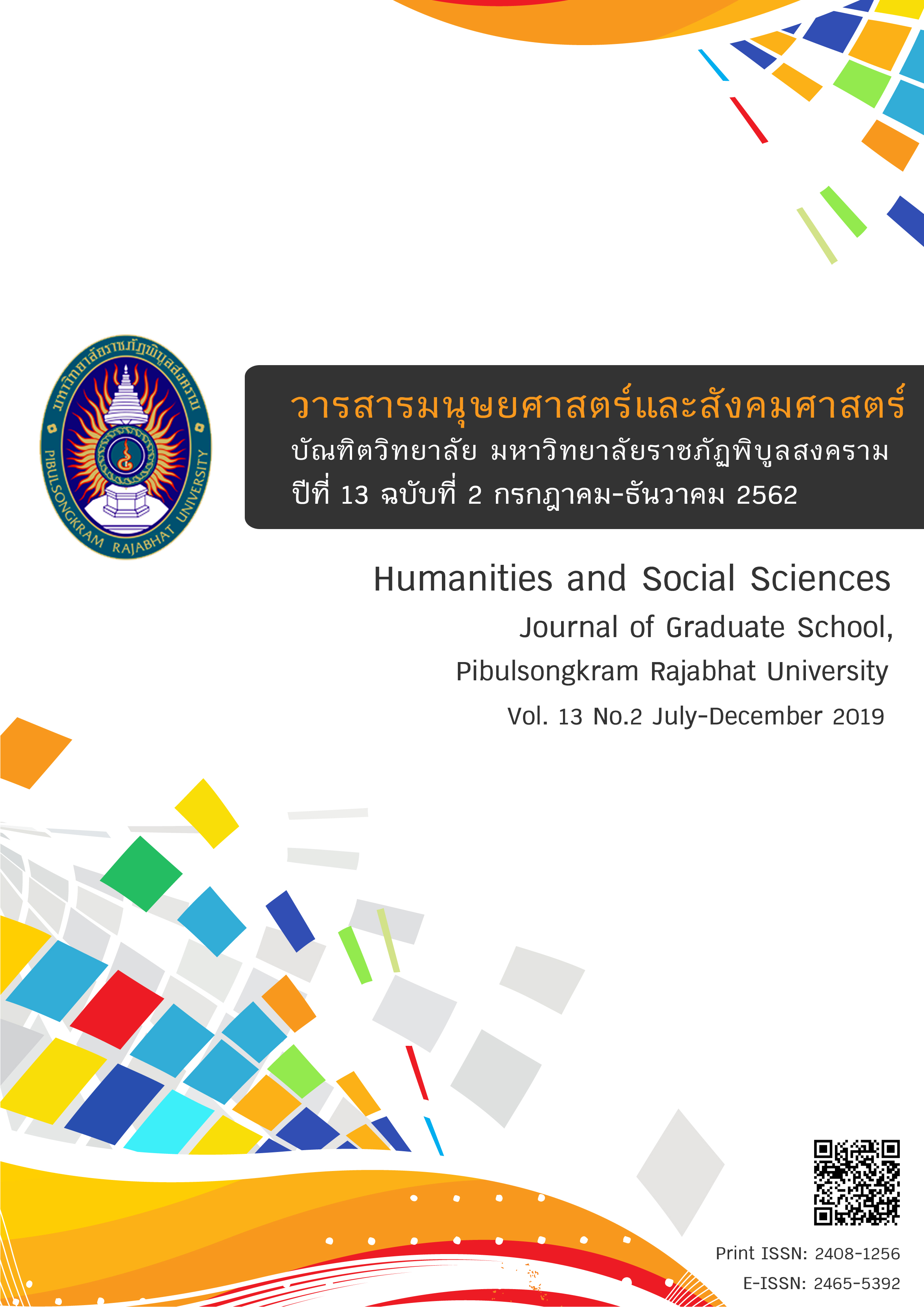Cohesion Shifts in Translation : A comparative study between Thai and English of “The Catcher in The Rye”
Keywords:
Cohesion, Discourse, ShiftsAbstract
This article aims at finding out the percentage of frequency of each type of cohesive devices used in both English and Thai from the novel “The Catcher in the Rye”, comparing the type of cohesive devices used in both versions of the novel “The Catcher in the Rye”, and to analyse what type of cohesive devices were shifted from English into Thai translated version, and giving plausible explanations of the causes of using the different types of cohesive devices in both English and Thai. The sample selected consists of eight chapters of both language versions, Thai and English, of the novel “The Catcher in the Rye”. The data were analysed within the de Beaugrande and Dressler’s framework. The study’s findings were as follows: (1) the most frequency of cohesive devices used in English were recurrence by 43.33 percent, followed orderly by pro-form 30.73 percent and junction 19.80 percent. In Thai, the most frequency of cohesive devices used in English used recurrence 44.99 percent, followed orderly by ellipsis 27.16 percent and junction 19.35 percent, which is consistent with the research on Cohesion Shifts in Translation. Therefore, the total frequency of cohesive devices used in both languages was different. (2) there are different types of cohesive devices between English and the Thai version of “The catcher in the Rye” for example, recurrence, ellipsis, pro-form and junction. The cohesive device of pro-form was found more in the English version than in the Thai version. Therefore, translating from English to Thai ellipsis should be used properly in Thai. Furthermore, the cohesive device of paraphrase should be shifted in Thai. (3) as the grammatical differences between Thai and English, the differences in language and the personal style of the translator were one of the plausible explanations for the cohesion shifts.
References
ชลธิชา บำรุงรักษ์. (2539). การวิเคราะห์ภาษาในระดับข้อความประเภทต่าง ๆ ในภาษาไทย. กรุงเทพฯ: ภาควิชาภาษาศาสตร์ คณะศิลปะศาสตร์ มหาวิทยาลัยธรรมศาสตร์.
ปาณิสรา เบี้ยมุกดา. (2550). การเชื่อมโยงความในพระราชนิพนธ์เสด็จประพาสต่างประเทศของพระบาทสมเด็จพระจุลจอมเกล้าเจ้าอยู่หัว (วิทยานิพนธ์ศิลปศาสตรมหาบัณฑิต). มหาวิทยาลัยธรรมศาสตร์, กรุงเทพฯ.
พิมพันธุ์ เวสสะโกศล. (2555). การแปลภาษาไทยเป็นภาษาอังกฤษ. กรุงเทพฯ: มหาวิทยาลัยธรรมศาสตร์.
ศาสนิก. (นามแฝง). (2531). ทุ่งฝัน. กรุงเทพฯ: เรจีนา.
Chanawangsa, W. (1986). Cohesion in Thai (Doctoral dissertation). George University.
De Beaugrande, R. A., & Dressler, W. U. (1981). Introduction to Text Linguistics. New York: Longman.
Halliday, M. A. K., & Hasan, R. (1976). Cohesion in English. London: Longman.
Witte, S. P., & Faigley, L. (1981). College Composition and Communication. Langauge Studies and Composing, 32(2), 189-204.
Downloads
Published
How to Cite
Issue
Section
License
Any articles or comments appearing in the Journal of Humanities and Social Sciences, Rajabhat Phibulsongkram University, are the intellectual property of the authors, and do not necessarily reflect the views of the editorial board. Published articles are copyrighted by the Journal of Humanities and Social Sciences, Rajabhat Phibulsongkram University.









